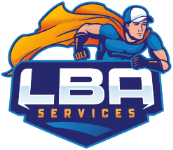
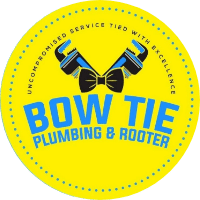

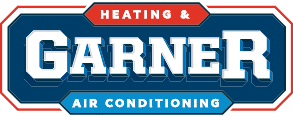


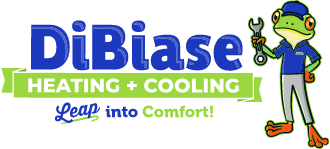

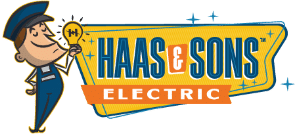




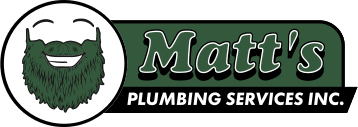

SOP Implementation For Home Services: The Champions & Resisters Method
Why SOP Implementation Fails (And How To Make It Stick)
Most SOPs (standard operating procedures) fail because they live in binders, not in daily behavior. Effective SOP implementation begins with a goal, frequent practice, and a clear scorecard.
Michael Raymer and Shawn Henson of Gray Wolf Strategies were nice enough to share their insights on this topic with Mark during a recent podcast. Check out their full conversation below, or read on for the guidance that can change your business.
Show Full Podcast Transcript
I’ll get on my little Soapbox for a second. It’s Mark Sherwin’s Contractor Marketing Soapbox. Your guide to getting found, selected, and remembered. And now, here’s Mark.
Hey, soap boxers. Welcome back.
Another special episode for you with a couple of special guests. Here we’re going to be talking today about how to go ahead and manage the standard operating procedures in a contracting business. And we’re exploring SOP to see how the proof is not all that you need, but how you spread the proof out across your organization. And with that, I’m going to introduce for you two guests here today and they are from Gray Wolf Strategies. Michael Raymer and Shawn Henson. And actually before I start, I’m going to go ahead and bring their brand on here and throw that up here on the screen for you. This is how you find them. It’s graywolfstrategies.com. And I’ll leave that up there for you for a couple minutes so you can be watching it while I’m talking. So Shawn, Michael, in that order, let’s go ahead and have you introduce yourselves.
My name is Shawn Henson. I’m CEO and a partner here at Gray Wolf Strategies. We’re excited to be here. We talk a lot of maybe not specific to SOPs, but very process driven. How do we achieve perfection through implementing processes? But yeah, we’re excited to be here and chat a little bit and hopefully help some friends out with understanding standard operating procedures.
Perfect. Perfect. And is that the same for you? Same. Yeah. Same. All right. Excellent. We rehearsed that.
And it’s the reason why our company puts so much emphasis on this is because we know that there are so many contractors who have tried to develop these in the past. And as often happens when you do not have a champion who is currently living inside your business, that you get pushed back and bad habits reemerge. You end up with an SOP that people kind of remember, but don’t actually do. And so I want to bring some thought leadership around that idea that how do you get an SOP to become a daily habit? And we brought Gray Wolf in here because as I understand it, they do tend to have some practices that are around how you make sure that a process is not just something the company uses. So with that aside, the standard part is important because every process could have a standard to it. It doesn’t mean that you don’t allow variation at all, but what it means is that there is, you’re not remaking it every single time. You’re not reinventing it every single time. So you want to have your checklist. You want to know how to do the job the right way every time. And I’m trying to find here about how to get a good starting jumping off point for this. I guess the best question here is how do you take a SOP from a concept into a daily habit? How do you do that?
Well, for me, I think the first process is to understand sales… the sales landscape as well. And so, you know, while there might be certain ways to, I don’t want to get too far off track, but while there might be a best practice for sales, there, there obviously, there’s many marketers on this call and Mark included, why, how do you best sell your product? Right. And so while some people, well, actually two customers, let’s put it this way, two customers will buy the same product using two different sales methodologies. And so when we talk about SOPs, and I think a lot of people on this call would say, you know, we have SOPs, we have processes that we follow until you go and look at a call recording and you’re like, you guys haven’t answered the phone in three rings once since I’ve been here. And your processes are solving for your day-to-day habits and the people you’ve entrusted to do these jobs. And so how do we go opposite? How do we go backwards, right? How do we reverse engineer what the problem is that we’re trying to solve into the process? Instead of going, here’s the process, all right, now fix your problem.
And I think that’s where most like SOP and processes, and we would consider the two synonymous here, but I think that’s where most SOP process fails is because you’re trying to solve the problem with the process instead of taking your problem and mapping the process to it, while following best practices as well, if that makes sense.
It does. It does. And so I’m going to say this out loud. And I totally agree with you. In fact, I would think that you use the perfect example. The phone bookings script has to match what you actually do in your business because you shouldn’t be promising things that you don’t do. And your intake has to be across the board. Who is doing your intakes? It’s going to be a mix of skills. So if we are doing the script for a professional level, call center, maybe they can capture the phone number and figure out the address, including the zip code by repetition. But if we had somebody who is not using the computer every single day, we want to go ahead and have a place to teach them how to find those things fast.
So that’s right. That’s right. And, you know, the other thing is when you talk about like, you say intakes and booking calls and what do you want your booking rate to be? And, you know, we talked about best practice, but then there’s best practice for you as well. And the same goes in this scenario. And so I think it’s very applicable.
And I think where the SOPs get lost in the day-to-day is that exactly what you said is the people end up not following the SOPs. And it really comes down to who’s actually building them. And for what purpose are they building the SOPs? If they’re building them for a process that they’ve inherited, they’re building them for the wrong reason. It’s already broken. And so I think that’s where we learned best. And we learned how to drive these SOPs, or processes that drive behavior. And.
And I think the thing that we should use to solve that problem most is training and practice. So you can go and be a, I don’t want to pick sides here, but the difference between a McDonald’s and a Chick-fil-A, McDonald’s has standard operating procedures and they are not trained well and we can see it. And then you have Chick-fil-A who trains on it on a daily basis and what is the difference in the experience? And those that experience is the practice of the people who are following through and executing on that standard operating procedure. So we talk about SOPs and we then begin to talk about habits and practice.
That’s huge. That’s huge. I think you hit the nail on the head and, and for us, you know, we, we, we train and coach calendar. And we coach calendar using call scored compatriot tracking. And we build practices so that it works in a CSR, for CSR managers, owners, and it supports the business. And so when you, when you talk about SOPs around that, it’s all those things. It’s what you just said. It’s training, it’s practice, it’s habit building.
And it’s the thing that we can do at the lowest level. We can do it five to 10 minutes a day. It doesn’t need to be a thing that takes you a minute away from your work. It can be done really with people who are doers and by people who are doing the work each and every day. They’ll get better at it. And that’s the cool thing about SOPs.
Yes, exactly. Exactly. And, and then on the flip side, another thing too, that I would say, and I know we’re using like an intake or a booking example right now, but, but also at the flip side is then, you know, what we’ve learned is process governance. And so, yeah, all the great stuff that you’re talking about, the intake, et cetera. But I’d bet you’d be hard-pressed to find a company that wants to argue this statement, which is during a season turn, if that’s the industry you’re in, or during a busy season, that they don’t have all these people out there doing their own way, you know? And so that to me is, is the, the, the sign of the difference of, it doesn’t matter if you even have the right process, you have to have a governance over those process and SOPs. And so when you lay out those processes, how those relate, how those move, how those integrate through what we would call business process mapping quizzes, you have to have a process that’s going to govern your processes. Not just say, well, they said they wanted call booking scripts, so we gave them call booking scripts.
If I was going to do something on call booking, I wouldn’t throw inventory of scripts at people. Which is what you find on the internet. Just grab some call booking scripts. And throw them at people. And if they want to do it, they’ll do it. But if not, you’re set up to fail. And there’s no way to rescue that. And you see that multiple times. That’s all the people are pumping out. That doesn’t actually give you a benefit.
So there’s a couple things that I would add there. And that is when the SOPs get created, I think that often they’re created in a vacuum and by people who are not doing the job. So they miss something. And so they say they don’t use it. But when they don’t use it, use is what’s happening right now. So whatever’s happening is your process. And if that’s what you’re doing, you might as well write it down and figure out if it’s the right thing to do. But if it’s not the right thing to do, you have to go back and make that change. That’s how process improvement works.
So when it comes to process improvement it is not an accusatory thing. We’re not trying to pin people as being wrong. We’re trying to understand what’s going on and fix the system so you get better outcomes. That is what you asked for. It’s that at least so far, that’s what I’ve heard you guys say in different ways as well.
Yeah, yeah, absolutely. I think when you look at the customer journey, people always say, stay on task. Stay on task. We’re here to talk about SOPs. But there’s probably areas we’re meaningfully disagreeing on that what’s on SOP, right? But when you look at it, you know, where did the customer come from? What was their experience? Was it a phone call? Was it a chat? You know, was it a texting thread? And then what happened in that conversion is the smoothness and the speed of that conversion. And what we see through a lot of is through process and SOP, you can affect those changes very quickly.
I’ve seen people go through, from an intake perspective, a 20% 1:45 all the way up to a 50 or 60 and I school self on the day. It’s just when I was, was a little bit more of this and a little bit more of that. And again, it comes down to, and it doesn’t even have to be phone booking. But again, the governance around this could be dispatching SOP. It could be a policy inside that. Hot water heaters. I see there’s a hazard. If they say any of these things, that job jumps to the top and somebody goes there today. That’s a simple SOP. You can do a little test run around like, hey, these hazard areas, we need just auto book or bump to the top because we need to solve this problem now.
I think, Mark, to your thought processes around this too. I love your checklists. They’re very good at being simplified in what to do. Don’t get crazy with it. Keep it as simple as possible. And don’t make it long. You know, there’s a bunch of questions I want to ask you to talk about. And in working with you and your team on a few things together, right, like you build what matters. You really do. And it becomes simple.
Well, thanks. I appreciate it. And then we were doing a little prep and it was something that I said that probably I need to say here on the record is I’m trying to go put together more and more stuff that helps. What I don’t want to do is put more junk out, because we have such an Internet:
What we don’t want to do is put more social stuff that increases the relevance but is not actually useful, because that’s what all people are pumping out. Like they are not helpful.
Pumping out 22 process and procedures for your business because you found a Google site to do this, like that is not productive. because you’ll never implement that right so you have to take off small chunks and you have to really stand there and say we are going to practice until we get it right.
Mike I’m going to jump in. That makes sense. The one thing that Mike does well when he implements this and I’m going to give him a ton of credit he’s coined champions and resistors and so big implementations and I’ve taken this style from him quite a bit is we find the biggest champion in the business and we find the biggest resistor in the business and we beta test with them a new SOP or a new workflow. And so you get that feedback from the top, you get the feedback from the bottom, right? The person is always negative.
And what’s great about that is when you go to implement it with the whole team, you can talk about you can have the champion talk about it and then you can talk about the things the resistor brought up and we’ve already resolved them, right? So the one person who maybe runs back into the parking lot during a little gossip around the trucks who’s like, “Can you believe they’re making us do …
it, right? I think it’s important, repetition. It’s just like professional athletes, right? They shoot 100 free throws before a game and they toss the ball back and forth for hours before they go up there to to swing at the plate.
Whatever it is, I think it’s important to make sure that we are doing it repetitiously, right? And so we can correct and adjust as we go along and we fine-tune, right? Maybe we find that unicorn who’s found a better way to do it.
And that’s where those SOPs where Mike had said it earlier, right? SOPs are best practice or best practice for me and that’s where we can go in and maybe make those tweaks and changes because we constantly improve things as we go along. Absolutely.
Yeah. You know what’s funny is we also never show people, and I don’t say we, but you’ll see the clients that the companies that struggle with this the most. They never show people the process works, but give it some reps. It’ll work. I promise.
Like, but not that one time. Correct. But if you don’t have these transparent conversations, if you set the wrong expectation, this is where I see people struggle so much—right in that area.
They just, for some reason, don’t believe in the process. Even though we’ve talked about it and we’ve met about it and everyone in leadership thinks it’s the greatest thing ever, the person who does the activity doesn’t believe in it. And most of the time it’s a lack of belief because I’ve seen scenarios where people create processes and then the person who creates the process steps in and does it completely different than their process. It’s a “rules for thee, not for me” situation.
We have clients who do that—where they build a process for their CSRs and then, when their CSR is out, they answer the phone. None of that process takes place. It’s completely the way the owner wants to do it or the manager wants to do it.
So again, it almost becomes this: I don’t believe you that it works, because if it did everybody would do it—and that person doesn’t do it when they answer the phone, and that person does half of it, and that person does their own thing. We can go on for hours on why they don’t work. It’s mind-blowing. For it to work, you’ve got to get people to believe that it’s a solution for the problems they run into.
And that probably all by itself is its own procedure or process. It probably is—just getting people to understand that and giving them… In my line of work, there are some people who need, “Here’s your instruction manual. Follow this.” Then there’s the visionary, like I am, and I’m already three steps ahead and thinking about tomorrow. That’s just how my brain works.
Is this something I believe they can do, and they can do confidently? And are we coaching around that confidence? As silly as it sounds, I’ve been to so many at this point. We’ve been to some that run on technology in the world and they can’t crack one-and-a-half. And then we’ve been to the ones that are building their own processes in an Excel spreadsheet and memorizing phone numbers—just the craziest scenarios on the planet. Then I’ve been to where they’ve got the best-in-class tech and they break two-point-five or three-point. I’ve been to both sides of it.
It’s really interesting to see how it’s just the belief in what works, works. We’ve had people who have CRM systems they pay a ton of money for and they never utilize any of the features because they don’t believe in them, even though all of the processes and procedures are mapped out in videos and everything else.
So it really just goes back to knowing your employees and knowing what they’re capable of and what they’ll buy into—and then building something they believe works and that will solve the problem they’re faced with. If we’re building a process that doesn’t solve a problem, we’re probably wasting our time on the wrong process.
And I get a lot of these companies: “Oh, I’m trying to hire, I’m trying to hire.” I have other companies that they’re hiring so quickly they have more people applying than they have jobs to fill. And I ask, “What’s the difference?”
It’s because brand has something to do with it, obviously, but they’ve built processes around people and set the expectations in a way that allows that person to achieve. They’ve got boundaries and guardrails that are healthy. So when they get home and they get offered the job and the family says, “What’s that job like?” they can say, “It’s consistent. I know what’s going to happen. I know what’s expected of me. I know that I’m going to go to work and do these things.”
“This is easy. This is how they’re expecting me to operate. I’m excited to go to work tomorrow.” That is what they’re applying for, and it attracts the right type of employee.
Have you seen that? Is that something that happens in the businesses you work with? Do structure and standard operating procedure actually attract the right employees?
I think there are a group of employees—mostly office folks, but I’ve seen it in the trades—that I’ve found are the most relevant here. Words of affirmation matter to some; others are monetarily incentivized; and some want the structure and the predictability.
People want words of affirmation and all the other things, but you’ll also have a group who are after the money. Then you’ll have some who want work–life balance. They want to see their family. They’ve put their years in.
They want to have a balance. There are a group who want to know what Monday will look like next Monday and Friday will look like next Friday, and they want consistency in how the dispatch board works. And they want that consistency.
That’s what they’re looking for. You’ll find this—especially if you’re interviewing properly, which I spend a lot of time training people on. If you’re interviewing properly, you can identify this very early: how adaptable someone is to wanting these things in place on day one. If they say, “Oh my gosh, I’ve been looking for that for years,” I’ve heard that in interviews.
“Oh, it’s chaos every day at my last company.” “Was it the money?” “No, I made plenty of money.” “Was it that you didn’t get to see your family?” “No, I saw my family plenty. I don’t work weekends.”
“Okay, what was it?” “It’s chaos. It’s constant chaos. The board was never the same.”
“The best call, best tech was never the same. It was so arbitrary that we couldn’t get on the same page. It drove me crazy, and my commissions would be wrong.”
I had another email question. How do you know if you got an SOP wrong, and when should you give up on an idea? I’m the “I’ll never give up on an idea” type.
I’ll improve the SOP, but what do you say to that? I’ve heard this stat—I’m pretty sure I heard it from Mike. I’m giving him a ton of credit here on this—but first-time implementations fail. Seventy percent of the time a first-time implementation fails.
So the big thing is sticking with it, building consistency, and making sure you’ve really given it a fair run before you scrap it or pivot. The first step is making sure everyone is actually doing it. They’re all doing it the same way. If it’s still failing after that, then it’s time to make adjustments. Mike, I’ll default to you on how long you give it before moving on.
For me, they say twenty-one times makes a habit. That’s about how long I’m going to drill it with my team until we get there. It’s an interesting question. I’d start with the processes people want. That’s huge.
Don’t start with things no one wants fixed. If you’ve got a 90% booking rate and things are moving, and three CSRs are each a little different but you’re not struggling, don’t start there. If you look over at permits and you realize you’re installing heaters without permits, that’s where you zoom in because everyone feels that pain. So start there.
I’ve seen both sides. Some teams run the “best tech, best call” board and it changes every day, then they wonder why morale dips and results are inconsistent. Others start with one obvious pain point, prove the fix, and build belief across the team. That belief matters as much as the tool.
We’ve also watched companies invest in top-shelf software and never use its features because they don’t really believe in them—even when the processes and procedures are mapped out in videos and docs. Belief in what works is what works.
It comes back to knowing your employees, what they’ll buy into, and building something they believe will solve the real problem in front of them. If we’re building a process that doesn’t solve a problem, we’re probably wasting time on the wrong process.
One more thing: structure attracts the right people. I hear from companies that can’t hire, and others that have more applicants than jobs. The difference isn’t only brand—it’s expectations and guardrails that let people succeed. When someone goes home and their family asks, “What’s the job like?” they can say, “It’s consistent. I know what’s expected. I know what I’m going to do tomorrow.” That attracts the right hires.
You can spot this early if you’re interviewing well. Some people want words of affirmation. Some are purely money-motivated. Some want work–life balance. Another group wants predictability: “What will Monday look like? What will Friday look like? How will the dispatch board work?” When they hear you run a consistent board, they light up.
The opposite story is common: “It’s chaos at my last company.” Not money. Not weekends. Chaos. The board was never the same. The “best call, best tech” was never the same. It was so arbitrary we could never get on the same page. It drove me crazy, and my commissions would be wrong.
I had another email question: how do you know if you got an SOP wrong, and when should you give up on it? My stance: I don’t give up on an idea; I improve the SOP. The practical answer is similar—give it enough consistent reps to know. Make sure everyone is doing it the same way, score it, and then adjust based on outcomes.
If it’s still not delivering after a fair trial, change the step that’s breaking. Don’t toss the whole thing if one step is the problem. And don’t let one oddball edge case reset the entire process for everyone.
Sometimes there’s friendly banter and team culture in the mix too. Yes, he’s a Tampa Bay Buccaneers fan. That’s okay—we don’t hold it completely against him. Others here are Steelers fans and happy with .500 these days.
If you need help, contact Mike and Gray Wolf with questions about the operational side. Contact LeadsNearby if you want to connect this to marketing or if you want ideas on how to ask for reviews for your company. We’re happy to help. We appreciate your time.
Thanks again, guys. Thank you, Mark. Pleasure.
It’s Mark Sherwin’s Contractor Marketing Soapbox. Call Mark to learn more
Key Takeaways
- Run a small pilot with one champion and one resister to prove the change.
- Show, don’t tell: demonstrate the SOP on real calls and jobs, then scale.
- Assign a single owner, one KPI, and a monthly change cadence.
What Is The Champions And Resisters Method?
As Shawn puts it, “We find the biggest champion in the business and we find the biggest resistor in the business and we beta test a new SOP or a new workflow with them. Pairing a trusted, agreeable teammate with a credible skeptic to co-pilot a small, real-world trial of your SOP helps objections surface early and prove that wins are visible.”
Peer influence matters: in a systematic review of 35 studies, exposure to champions was associated with increased organizational uptake in five of seven evaluations.
Why Show, Don’t Tell Drives Adoption
People copy what they see trusted peers do, not what a memo describes; modeling the SOP on real work makes the change feel safe and doable.
“One problem that we see over and over is that companies never show people the process works,” Michael says. “They just theoretically tell them it works. You have to show them that it works.”
Michael says that when a skeptic joins the pilot and sees a win, resistance drops across the board.
“Resistors have an amazing way of showing people this one works, guys. This one works.”
Get A Champion-Led Rollout Plan
How Do I Pick The Right Champion And Resister?
Choose a respected doer as your champion and a thoughtful skeptic as your resister; the pair will expose gaps and build trust fast.
Michael explains, “Here at Gray Wolf, we don’t step into a process or a procedure, especially building one, unless we’ve identified who your champions are and who your resistors are.”
It also helps to start in one lane—one dispatcher, one CSR team, or one install crew—so you can measure outcomes quickly.
How Do I Run A Two-Week Pilot Without Chaos?
- Limit scope, set one outcome metric, and keep the steps on one page so the team can use the SOP while doing the job.
- Keeping demos short is another advantage: five to ten minutes in a ride-along, a call review, or a quick huddle.
- When questions come up, capture them in the pilot log. Shawn stresses the importance of closing these loops before rollout. “Then, when you bring it to the whole team, you already know what objections you’re going to hear and you’ve already solved them.”
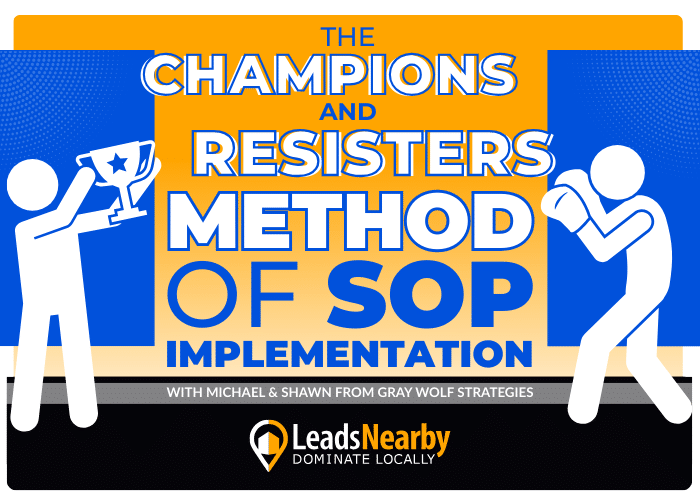
How Do I Scale Without Whipsawing The Team?
Adopt a monthly change cadence: test one tweak, measure, then adopt or revert. Be sure to avoid midweek pivots because they can cause confusion.
Give the rollout a clear owner and a scoreboard. Shawn adds, “Assign responsibility. The SOP has to be measurable, it has to be trackable, and someone’s got to say yeah I’m gonna make sure this gets implemented.”
Where Should I Start For Fast Proof?
Start where results show up quickly: a dispatch SOP to reduce miles and callbacks, a review-request SOP, or a one-page CSR phone script. No matter where you start, you need to make sure that expectations are clear.
“How are we training on it?” Michael asks. “How are we conditioning our team to know what our best practice is and follow that SOP?”
Learn More About Process
Visit the Gray Wolf Strategies website to get your free SOP framework.
For intake coaching, see the steps in 8 Tips For An 80% Phone Booking Rate.
To connect the journey from click to booked job and on-site proof, see Turn More Clicks Into Confirmed Customers and Maximize Your Home Visits.
To have a conversation about your marketing, contact LeadsNearby today.
Frequently Asked Questions: Champions And Resisters For SOPs
What’s the fastest way to launch a Champions pilot?
Pick one champion and one resister, choose a narrow workflow, and run a two-week trial with a single outcome metric.
How long should a demonstration take?
Five to ten minutes during a ride-along, call review, or quick huddle is enough to model the behavior and set expectations.
What if the resister stays skeptical?
Keep the scope tight and let results speak; if the KPI does not move, refine the steps and retry before scaling.
Who owns the rollout after the pilot?
Assign one owner (dispatcher lead, CSR coach, or service manager) and keep a simple change log that everyone can see.
How do I avoid SOP “Binder Syndrome”?
Keep procedures to one page, practice briefly each day, and score two real interactions per person each week.
Last updated: August 2025
Why Your Service Area Business Doesn’t Show Up Everywhere on Google Maps » « Turn More Clicks Into Confirmed Customers

